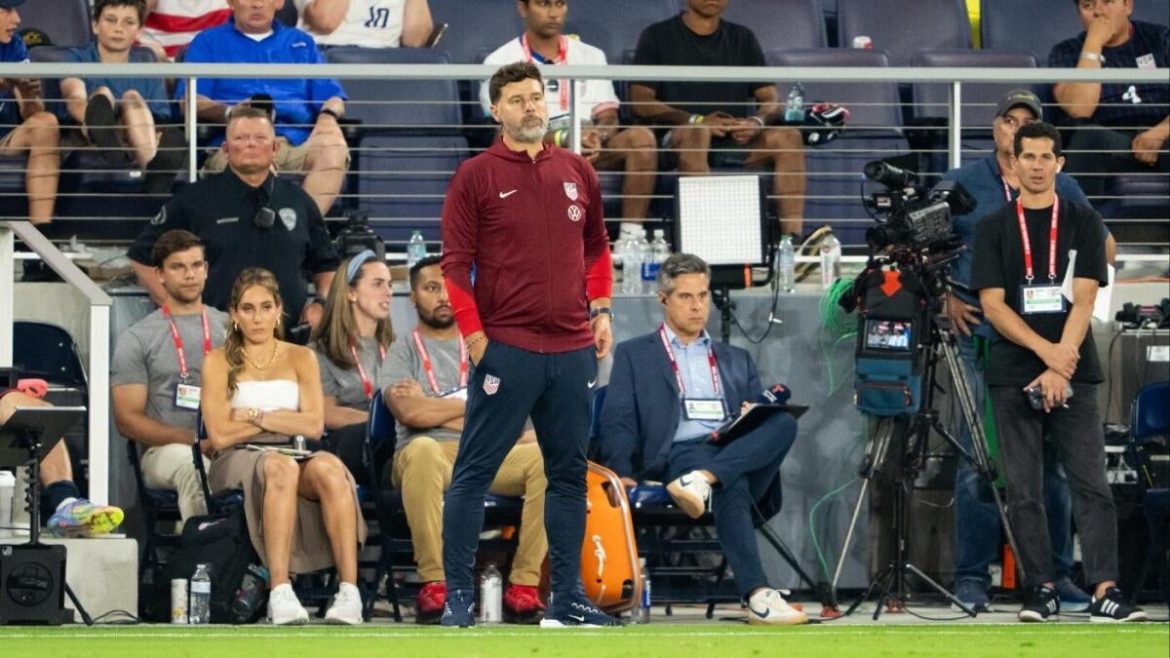The recent discourse surrounding the U.S. Men’s National Team (USMNT) reveals a complex interplay between internal team dynamics, external criticism, and the broader expectations of American soccer’s trajectory. This report explores the nuances of the current conversations, focusing particularly on the team’s response to critique, leadership perspectives, and implications heading toward the 2026 World Cup—a pivotal moment for soccer in the United States.
Navigating Criticism: Tyler Adams’ Stance and Team Focus
Tyler Adams, captain of the USMNT, embodies the team’s prevailing attitude in the face of recent external criticisms, especially those voiced by former U.S. soccer stars like Landon Donovan. Despite sharp and sometimes “pointed” commentary highlighting the team’s inconsistent performances and strategic shortcomings, Adams emphasizes an internal focus. He remarks, “We don’t talk about that,” signaling a deliberate effort to tune out outside voices and reinforce team cohesion and confidence.
This approach suggests a maturity in leadership. Rather than publicly engaging in back-and-forth debates or succumbing to distractions, Adams and his teammates appear to favor concentrating on their preparation and execution. Such a mindset can be crucial in fostering resilience amid skepticism, particularly when the national spotlight intensifies ahead of a FIFA World Cup hosted on home soil.
The Weight of Legacy and Expectations
Former players, notably Landon Donovan, often represent a vocal pillar of the soccer community, shaping public discourse with their perspectives. The criticism from these ex-stars, perceived by some fans as “hypocrisy,” reflects a tension between past successes and current challenges. Commenters note that hosting the 2026 World Cup is a defining opportunity that could transform soccer’s stature in the U.S., intensifying scrutiny over USMNT’s present form.
Within the fan community, frustration abounds about the team’s inability to consistently perform at the elite level expected, especially given the sport’s growth domestically. Some point to a “sloppy string of results” and express concern about a lack of talent depth compared to elite soccer nations. Simultaneously, others acknowledge the historic achievement of qualifying for every World Cup since 1990, highlighting the ongoing balancing act between acknowledging progress and demanding higher standards.
Player Management and Physical Demands: The Case of Christian Pulisic
Star players also face the crucible of balancing club commitments and national duty. Christian Pulisic’s decision to skip the June camp and the Gold Cup, prioritizing rest after logging approximately 120 games for club and country over two seasons, adds another layer to discussions about player care and strategic resource management.
Pulisic’s move underscores a growing awareness within the USMNT about managing player workload to maximize peak performance during crucial tournaments. It implicitly speaks to the challenges U.S. players encounter amidst congested schedules, international travel, and the physical toll of high-level competition.
Tactical Evolution and Individual Performance
Behind the scenes, there is recognition among team leaders and analysts that the USMNT needs tactical adaptation. Adams has highlighted inconsistent individual performances as a barrier to sustained success. This admission points to a team striving to “play in a different way” — a phrase hinting at potential shifts in formation, strategy, or mentality required for the team to thrive in the demanding CONCACAF environment and on the world stage.
Critics advocating for change question the long tenure of former coaching influences, particularly post-Copa failure, calling for new leadership and fresh approaches to elevate the team beyond recurring plateaus. The debate encapsulates broader discussions about developmental pathways, talent nurturing, and coaching philosophies in American soccer’s ecosystem.
Soccer’s Place in the American Sports Landscape
Beyond the pitch, US soccer’s popular and cultural positioning remains an ongoing battle. Compared to other major sports, soccer occupies a relatively lower tier of public engagement and infrastructure support. This context frames much of the discourse about talent pipelines, competitive results, and investment in the sport’s growth.
Fans and analysts alike recognize that success on the international stage, especially during the 2026 World Cup hosted by the U.S., could catalyze a new era for soccer’s prominence. Yet many stress that realizable progress necessitates both patience and strategic vision, balancing immediate performance with sustainable development.
Looking Ahead: The 2026 World Cup as a Defining Moment
The forthcoming 2026 FIFA World Cup emerges as a focal point—the “crucial moment” for the sport’s evolution in America. Soccer experts and commentators maintain that the tournament will “always deliver,” reflecting optimism that a well-organized, highly publicized event on U.S. soil can propel the sport’s profile.
For the USMNT, this means not only preparing technically and tactically but also cultivating a narrative that galvanizes fans, players, and stakeholders. Leadership from players like Tyler Adams will be critical in maintaining focus and absorbing pressure positively.
Conclusion: Striking a Balance Between Criticism and Progress
The landscape of U.S. men’s soccer at this juncture is one of cautious introspection amid high expectations. Tyler Adams’ and the team’s choice to tune out external criticism, while confronting their own inconsistencies, reflects a nuanced approach to navigating pressure and growth. The challenge rests in translating potential into consistent success, managing players’ physical loads smartly, and evolving tactically to meet global standards.
As the U.S. prepares to host the 2026 World Cup, the team’s journey will be closely watched as a barometer for the sport’s health nationally. The interplay of leadership resolve, strategic planning, and cultural momentum will shape whether American soccer can capitalize on this historic opportunity—turning criticism into a catalyst for meaningful, lasting advancement.





